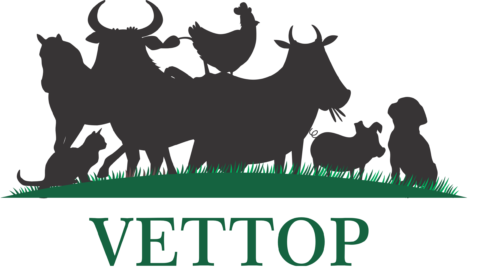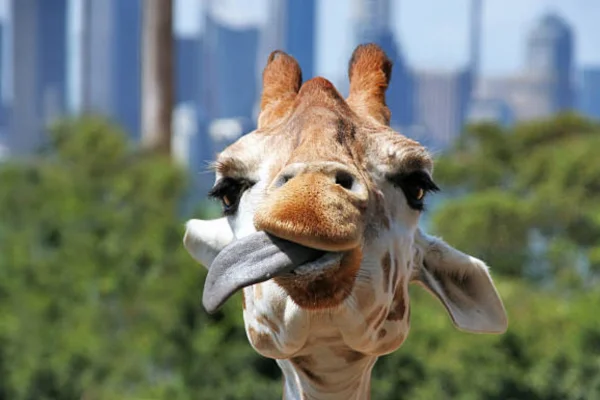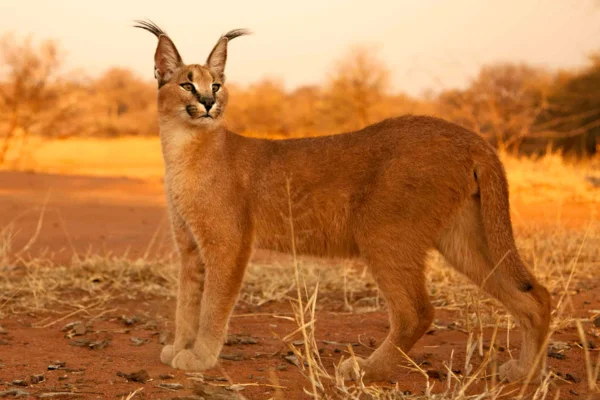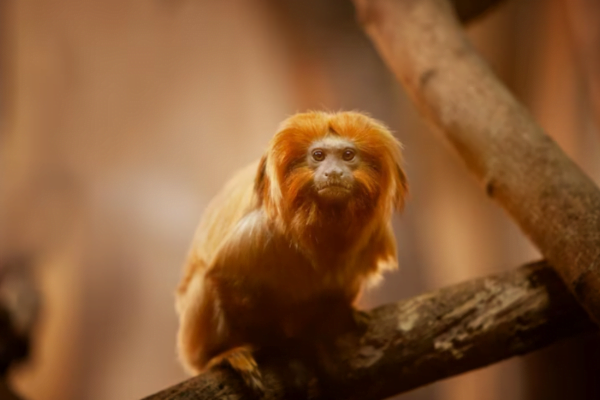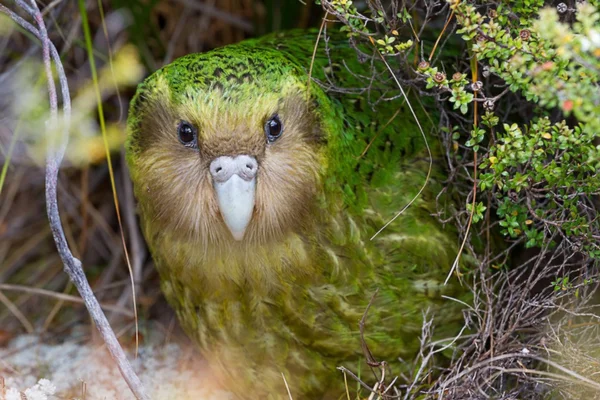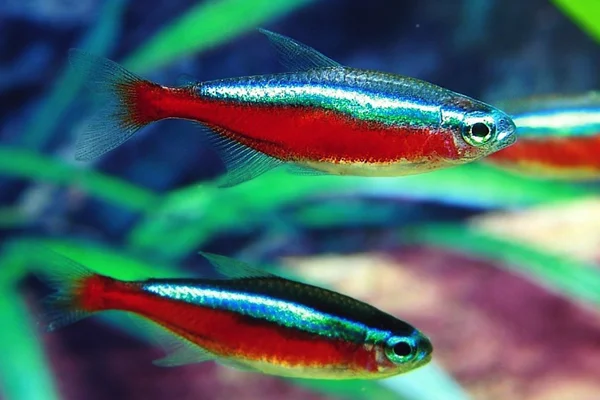The Giraffe's Tongue
Color, Size and Impressive Curiosities
The Giraffe's Tongue -When talking about giraffes, the first thing that comes to mind is their incredibly long necks, but there is another equally curious and fascinating aspect of this animal: their tongues.
The giraffe's tongue is one of the most impressive and unique features of this species, playing an essential role in feeding and survival.
What's more, this complex muscular structure is shrouded in a series of mysteries that leave many puzzled. Let's explore in detail the color, size and some surprising curiosities about giraffes' tongues.
Contents
The Giraffe's Tongue: The Size Really Impresses
One of the first things that strikes you about a giraffe's tongue is its size. On average, an adult giraffe's tongue can reach between 45 and 50 centimeters in length.
This length is essential to help the animal reach the leaves that form the basis of its diet, especially in tall trees such as acacias.
The ability to extend its tongue so far allows the giraffe to access food that other animals cannot reach. This is especially useful in their natural habitat, where competition for food resources can be intense.
By being able to reach leaves on higher branches, the giraffe benefits from a relatively abundant food source, while other herbivores compete for more accessible leaves.
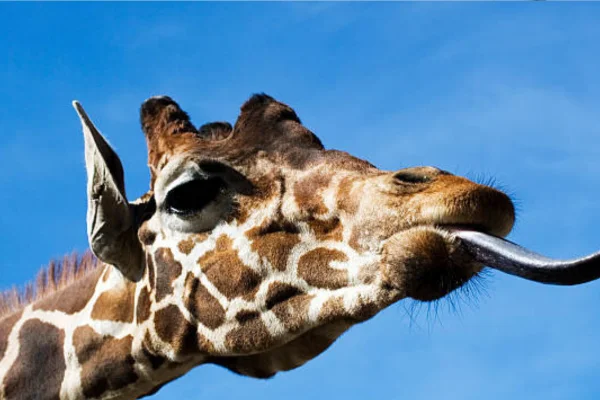
The Unusual Color: Why is a Giraffe's Tongue Dark?
Another striking feature is the color of the giraffe's tongue. Unlike many species, whose tongues are pinkish or reddish, the giraffe's tongue has a bluish or dark purple hue. This unique coloration is not just a visual peculiarity, but plays an important role in the giraffe's life.
The main reason for this dark color is an adaptation to prolonged exposure to the sun. Giraffes spend most of the day feeding, which means their tongues are often exposed to direct sunlight.
The dark pigmentation acts as a natural protection against the damage caused by ultraviolet rays, preventing sunburn. In addition, the back of the tongue is lighter, possibly because this area is less exposed.
This evolutionary trait highlights how giraffes are perfectly adapted to their environment, evolving physical traits that allow them to survive and thrive in the arid savannahs of Africa.
The Essential Role of Food
The giraffe's tongue is an incredibly effective feeding tool. In addition to its size and flexibility, it is extremely strong and agile, able to wrap itself around the thorny branches of acacias, removing the leaves without the thorns causing injury. The tongue, together with the upper lip, which is equally flexible and resistant, allows the giraffe to skillfully navigate between thorns that could injure other animals.
This ability to circumvent thorns is vital for the giraffe's diet, as acacia trees are one of its main food sources. Even the sharpest thorns are no challenge for the giraffe, thanks to its adapted tongue. In addition, the tongue is covered in a thick layer of saliva, which also provides additional protection against thorns.
Curiosities about the Giraffe Tongue
Now that we know some of the most important features of the giraffe's tongue, it's interesting to explore some curiosities about this peculiar organ that make the life of giraffes even more fascinating.
1. Giraffe Mouth Cleaning
Giraffes are known for their surprisingly efficient oral hygiene, largely thanks to their tongues. This flexible organ helps clean the teeth after meals. The tongue removes leaves and other debris from the teeth, ensuring that the giraffe's oral health remains in good condition. However, it's worth mentioning that giraffes, like many other herbivores, don't have teeth in the front upper part of their mouths, only in the back, which makes cleaning easier.
2. Grip ability
The giraffe's tongue is prehensile, which means it can grasp objects quite skillfully. This ability is similar to that of some primate species and allows the giraffe to manipulate leaves and branches with precision. This also demonstrates the high level of muscular control that giraffes have over their tongues.
3. Eating rhythm
A giraffe can spend up to 12 hours a day feeding, which means that its tongue is in constant use most of the time. This intense feeding rhythm is necessary to maintain the animal's enormous body, which can weigh up to 1,200 kilos in adult males. Over the course of a single day, a giraffe can consume up to 30 kilos of leaves and vegetation.
Incredible Evolutionary Adaptations
Giraffes are a remarkable example of evolutionary adaptation. Their long necks, long legs and robust, dark tongue are all adaptations to the unique environment in which they live. The evolution of this peculiar tongue was a response to the giraffe's feeding needs in environments where the available food is at heights out of reach of other herbivores.
In addition, giraffes' thick saliva plays a significant role. As well as protecting against thorns, their saliva has antibacterial properties. This adaptation helps prevent infections, as giraffes sometimes feed on potentially harmful or decaying plants. This additional protection is essential for survival in an environment where feeding opportunities are not always ideal.
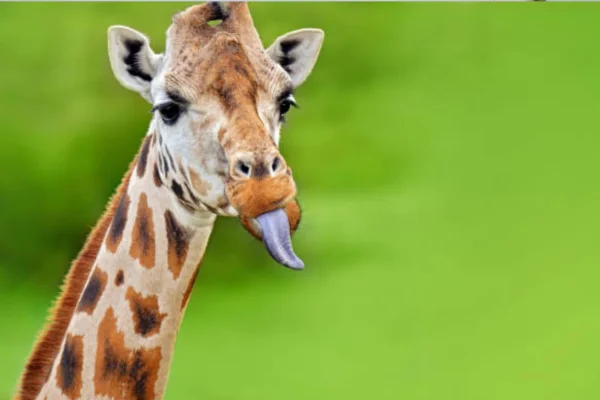
The Importance of Language in Communication
Although giraffes' tongues are often discussed in terms of feeding, they can also play a role in communication. Giraffes are generally silent animals, but research indicates that they may use low-frequency sounds, inaudible to the human ear, as a form of communication. In addition, some scientists suggest that tongue movement, as well as eye contact and facial expressions, may be a subtle form of communication between giraffes.
During mating, for example, giraffes often interact through complex body movements, and the tongue can be used in social interactions and in the display of dominance or submission behavior. The flexibility and grip of the tongue may play a role in these interactions, although this area of study still needs more research to be fully understood.
Conclusion: Much More than a Food Tool
The giraffe's tongue is undoubtedly one of the most fascinating adaptations of this iconic animal. Much more than a simple feeding tool, this structure is a marvel of evolution, perfectly adapted to the needs of the giraffe's environment. Its dark color, strength and flexibility demonstrate how incredibly ingenious nature is, creating specific solutions to the challenges of the natural world.
Watching a giraffe in its habitat, whether on the African savannah or in a zoo, it's impossible not to be impressed by the dexterity and complexity of this apparently simple but incredibly functional language.
This organ plays a vital role in giraffe survival and is yet another reminder of the incredible diversity and beauty of animal life.
Thank you for visiting us and check out our other work
https://vettopbr.com/cachorros/
